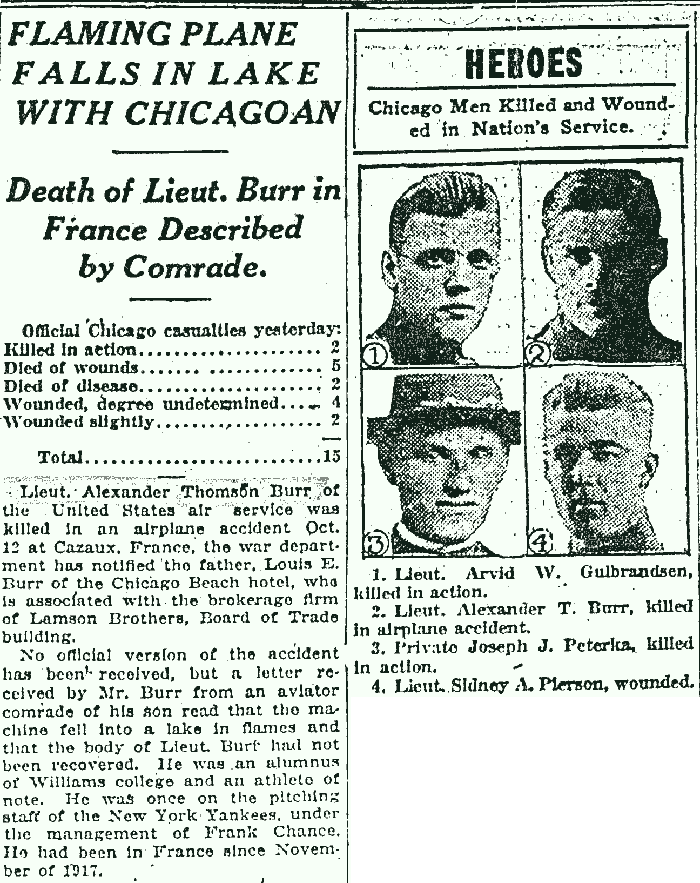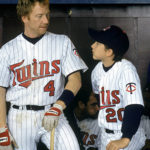Remembering Tom Burr on Memorial Day
 Whenever I am asked what’s my favorite movie, the answer is always the same: Field of Dreams. It’s always worth watching, for the themes of fathers and sons, and a love of baseball that defies logic.
Whenever I am asked what’s my favorite movie, the answer is always the same: Field of Dreams. It’s always worth watching, for the themes of fathers and sons, and a love of baseball that defies logic.
The real-life story of “Moonlight” Graham is one that author W.P. Kinsella spun into literary gold. Here was a ballplayer who didn’t get more than a fleeting moment in the major league sun, but still went on to do great things after that moment passed. You’re seeing Bert Lancaster’s portrayal of Doc Graham, aren’t you? That’s OK, because I’m seeing it, too. There couldn’t have been a better actor to fill that role.
There once was a ball player who, like “Moonlight” Graham, only appeared in a single half-inning of one major league game, and never had a turn at bat. But unlike Graham, this player’s post-baseball career took a dramatic and fatal turn.
Alexander Thomson Burr (people called him Tom) was a Williams College graduate from Chicago, who appeared in a single game for the Yankees in 1914. Although Burr was a pitcher by trade, some managerial moves by Frank Chance forced his insertion into the outfield during a game back in 1914.
Like Graham, Tom Burr stood in the outfield, didn’t have a ball hit his way, and the game ended before he had a chance to come up to bat. His career still registers in the annals of baseball, but it couldn’t have been very satisfying for him.
Instead of going to medical school, though, Tom Burr joined the U.S. Army in time for World War I. The Air Service—the forerunner of the modern Air Force—trained Burr on the new idea of using airplanes in combat.
While earning his flight wings, he showed his old pitching form during a game between military teams in the summer of 1918. History records that Burr struck out 23 batters in a single game. I like the idea of two military groups facing off against each other on the ballfield, taking their minds off the deadly combat that likely awaited most of them.
On his way to the front in October of 1918–only a month before the end of the war—Burr collided with another pilot over a lake in southwestern France. The former big leaguer had given his life in the service of his country at age 24.
Burr’s body was recovered and returned to Chicago, and his remains are buried in Rosehill Cemetery, on the city’s north side. His is not a military grave, but his initials are atop an otherwise unmarked headstone on a family plot.
Since I don’t personally know anyone who died in military service, I have adopted A.T. Burr as my own for the past few Memorial Days. He typically gets overlooked by those who plant flags at military grave sites, because how would they know who he was? Anyone who personally mourned Burr’s death has been dead for a while by now. But as a baseball fan, it’s important to highlight a story like his, and pay my respects to him, and those like him, in whatever small way I can.
We can never do enough to thank the Tom Burrs of this world, who gave their own lives in service of this country and the freedoms it provides. But still we owe it to them to try. May all of us remember their sacrifices and celebrate them on Memorial Day, and all year round.


























